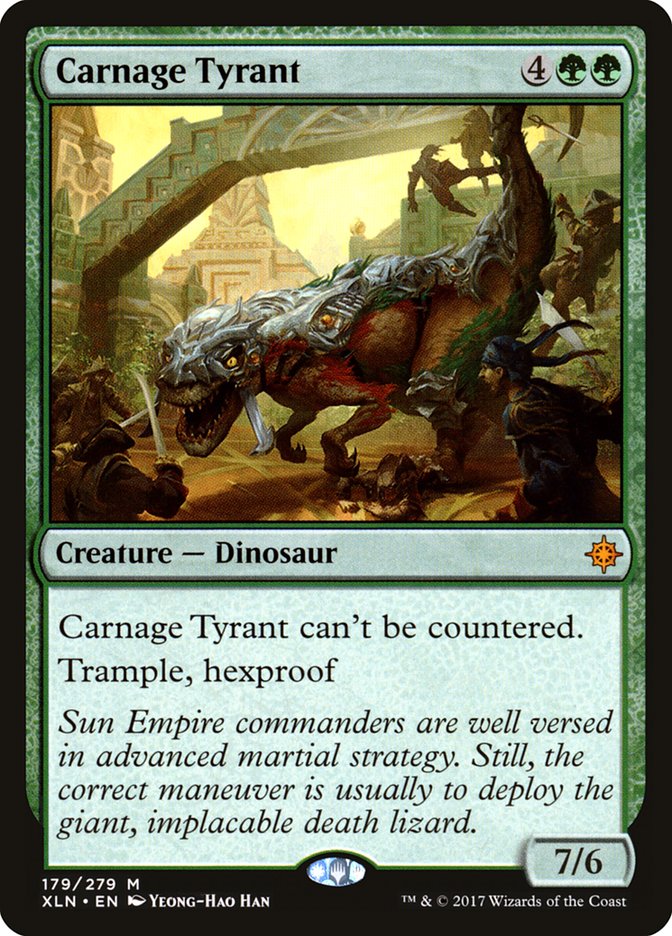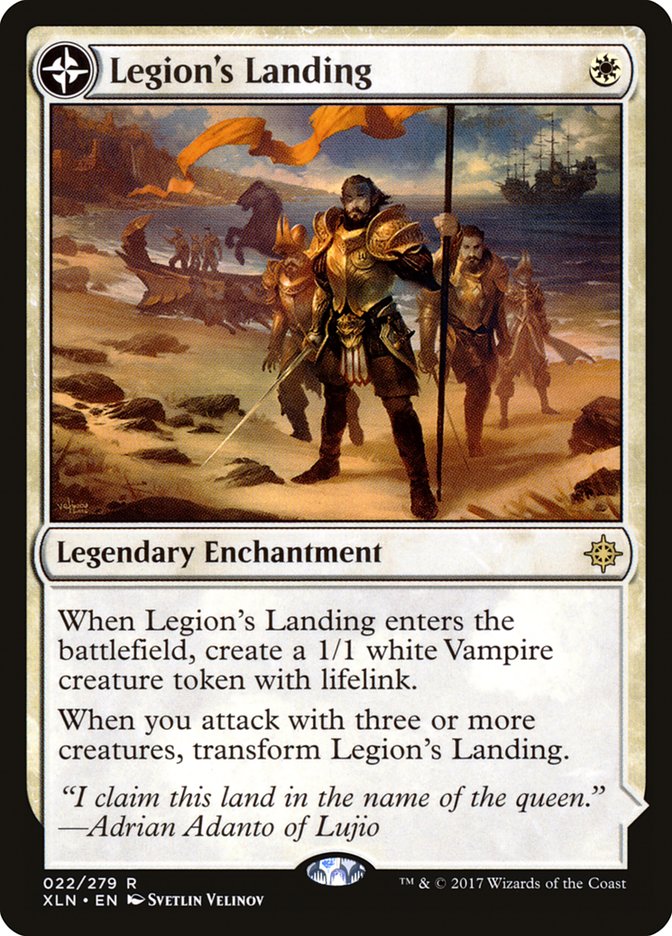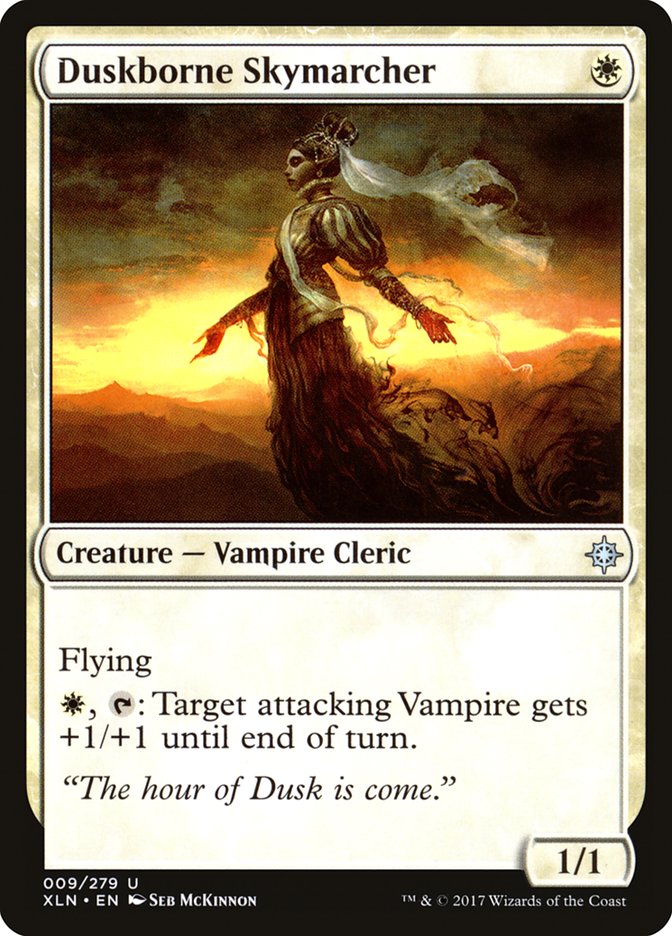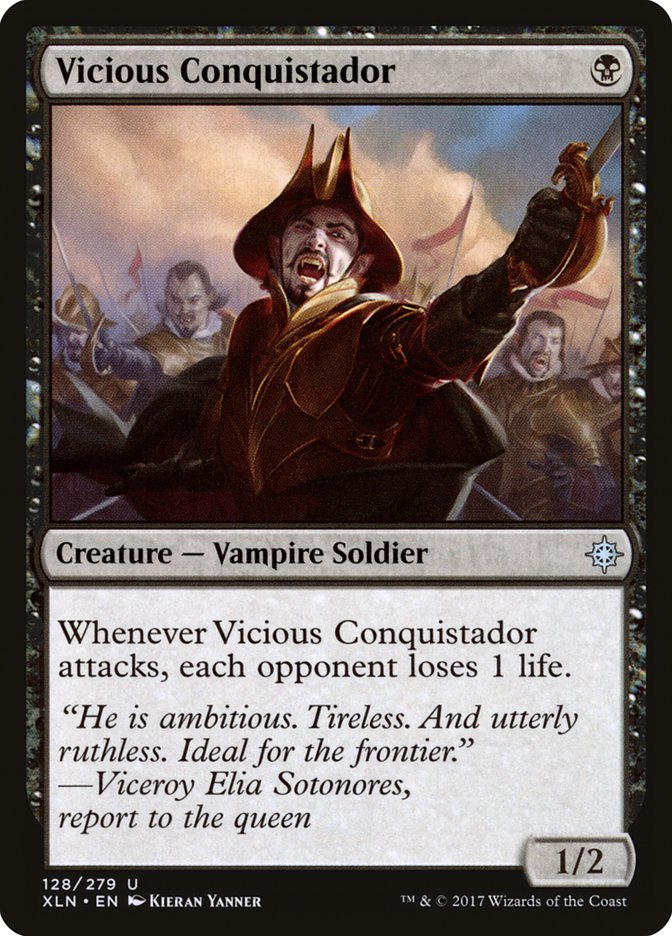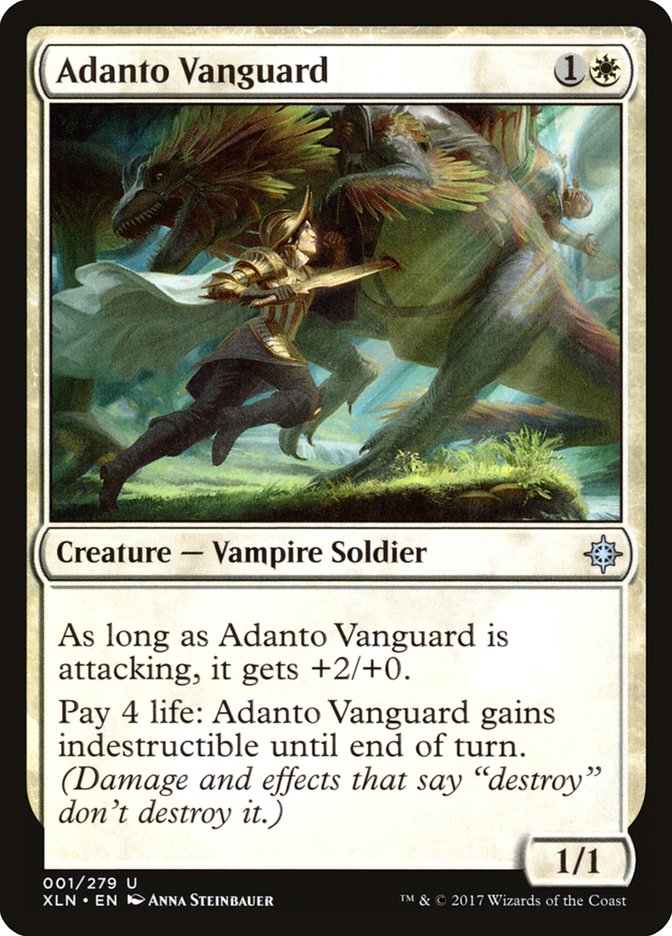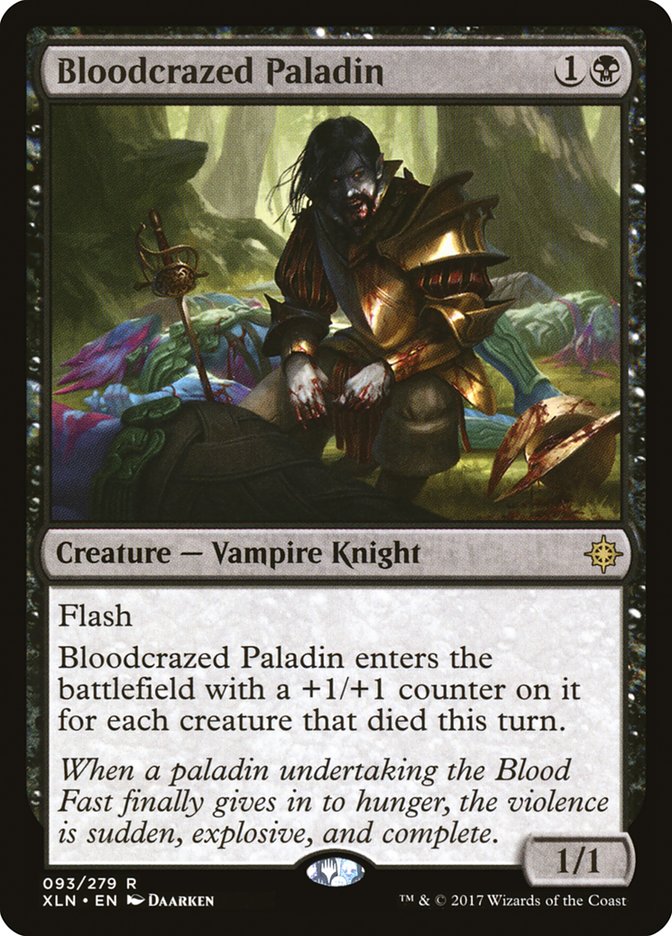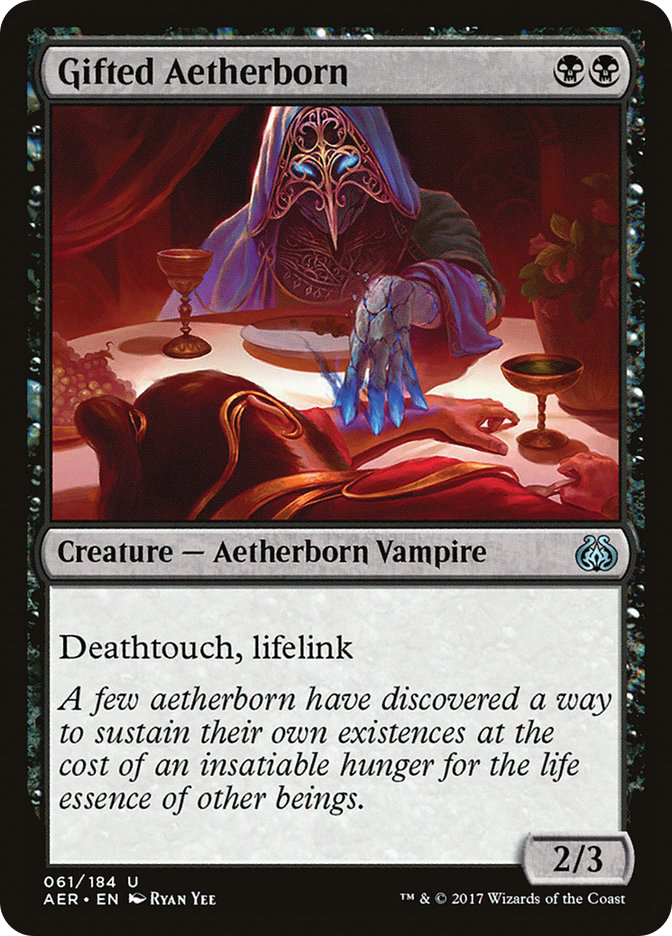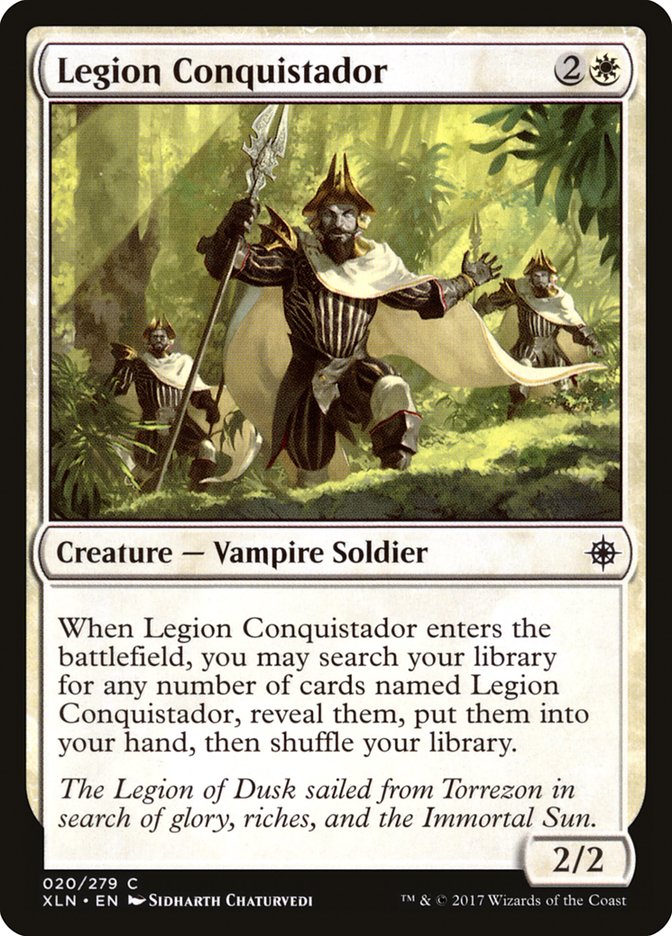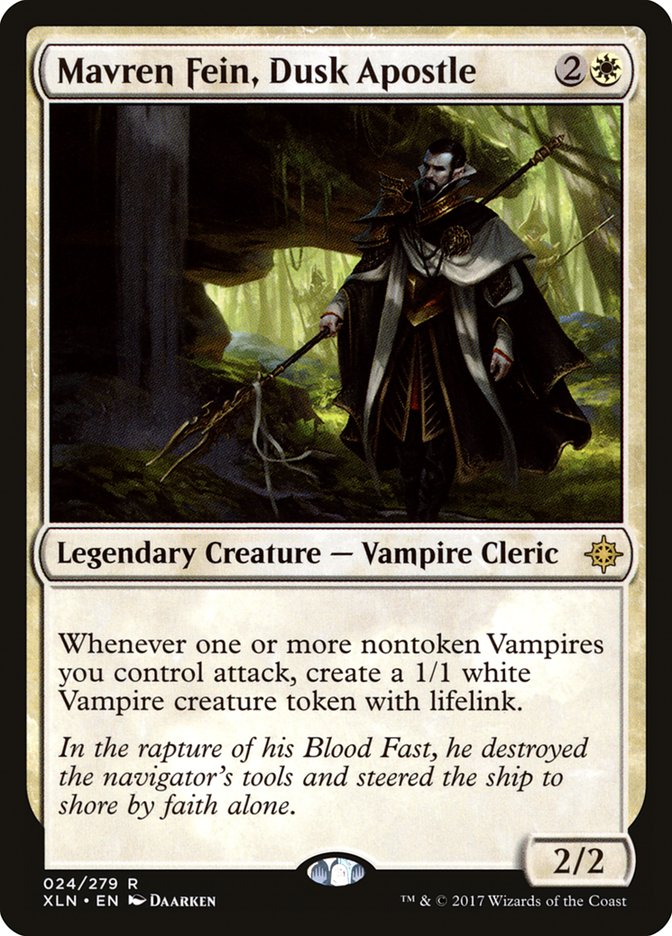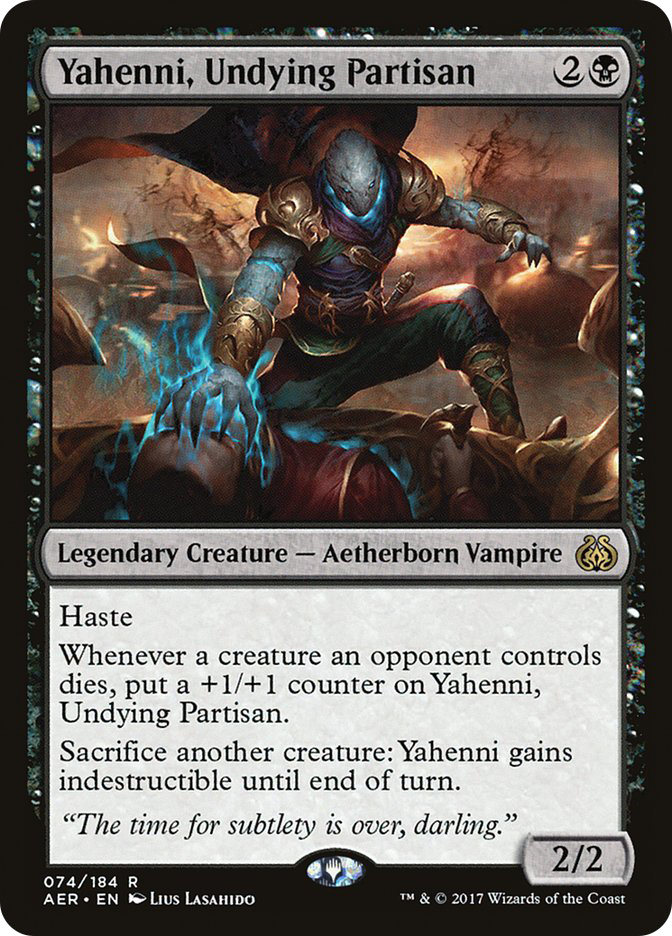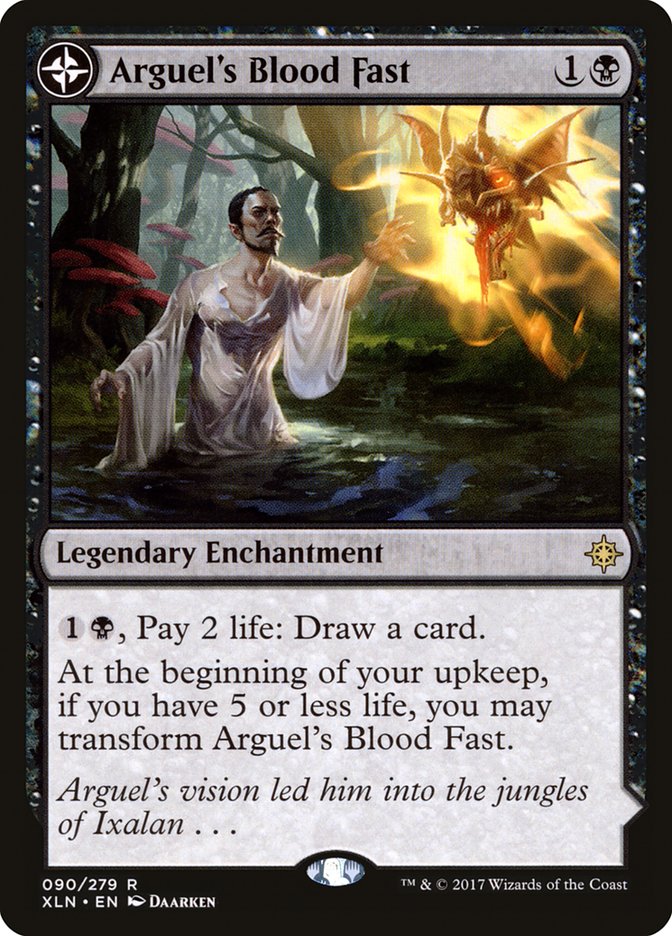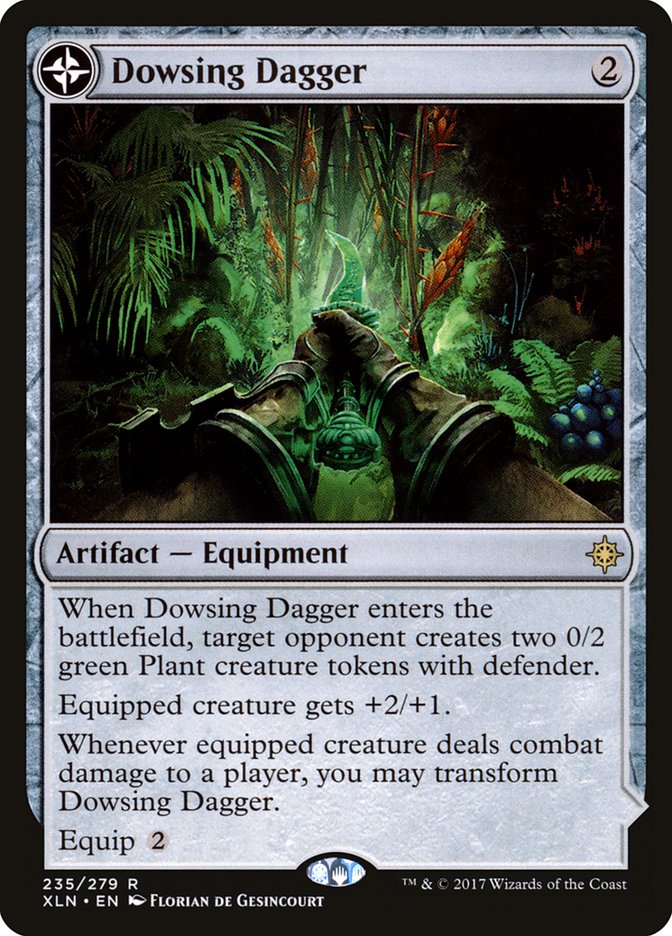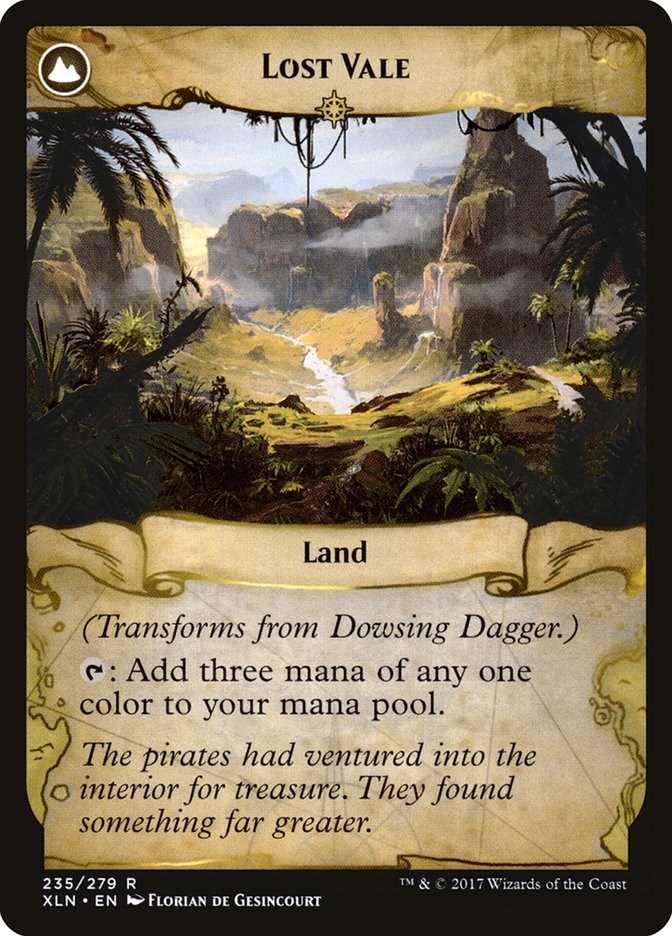Big, flashy Dinosaurs have definitely been the stars of Ixalan previews. If you look at presale prices, you’ll see that most of the top cards are the rare and mythic Dinosaurs. Dinosaurs are sweet and everything, but hoping to cast a mana creature on turn 2, further hoping that it lives, and then tapping out for arbitrary big monsters just isn’t my style.
Nope.
I’d rather play almost any other strategy in Magic, to be honest. If I can put together a solid gameplan out of some scrappy, overlooked one- to three-mana creatures, even better, but I’d even take spell-based control or combo over mashing Dinosaurs into each other.
Luckily, I don’t think Dinosaurs are the sole future of Standard. I think they might be too slow to beat the red decks, or potentially too weak to Heart of Kiran and/or good removal. I think there’s more to this set that we haven’t found yet, so I want to start with some things that may have been overlooked.
The Vampires of Ixalan haven’t gotten a lot of respect so far, which makes sense. They’re a strange collection of cards without a clear purpose, an aggressive tribe where a lot of their strength is in incidental lifegain, yet there’s no real payoff for gaining life except for a few ways to spend life and the simple fact that gaining life makes racing hard for the opponent.
If Vampires has a place in the metagame, one would hope that it’s as a counter to aggressive red strategies, where the lifegain will allow you to win races and punish your opponent for playing cards that are intended primarily to deal twenty damage.
Beyond that, Vampires looks to be a “go wide” aggro deck that’s a little low on Anthems. The big payoff for having a lot of Vampires is Sanctum Seeker, and a lot of the validity of the tribe as an aggressive deck will come down to the positioning of Sanctum Seeker as a finisher.
Looking at the curve of Vampires as an aggro deck, my primary takeaway is that it’s “fine.”
At one mana we have:
At two mana we have:
At three mana we have:
All of these lead up to Sanctum Seeker as a finisher. Those are all conceivably playable cards in Standard, and they offer a solid curve, but I worry that they’re basically all second-string filler rather than cards we’re excited to get to play with. Still, it is possible to build a good deck out of creatures like that if the mana and support cards are good enough, especially if the spells in the format dictate that we want to be playing those colors anyway.
Black spells look pretty great: Fatal Push and Duress are among the best cheap spells in the format, and black and white have a good mix of tools available to them further up the curve.
The other really big question for me is whether Arguel’s Blood Fast is a good enough way to spend the life gained from lifelink creatures to generate inevitability. Cards like Duress and Fatal Push are the exact right kind of card to support an engine that turns life and mana into cards over time, so it doesn’t seem impossible as long as we’re good at gaining life anyway.
The most aggressive build might look something like this:
Creatures (25)
- 3 Yahenni, Undying Partisan
- 4 Gifted Aetherborn
- 2 Mavren Fein, Dusk Apostle
- 4 Sanctum Seeker
- 4 Duskborne Skymarcher
- 4 Vicious Conquistador
- 4 Adanto Vanguard
Lands (20)
Spells (15)
Sideboard

Ultimately, I think this approach is underpowered. The spells are pretty good, but any black deck can use them, and there isn’t enough synergy to justify essentially playing Suntail Hawk and Blade of the Sixth Pride.
What’s more interesting is trying to build a midrange deck that uses some Vampires to gain life to support Arguel’s Blood Fast as a core part of its strategy:
Creatures (14)
- 2 Yahenni, Undying Partisan
- 4 Gifted Aetherborn
- 4 Glory-Bound Initiate
- 1 Oketra the True
- 3 Crested Sunmare
Lands (18)
Spells (28)

This isn’t really a Vampire deck; it’s more of a B/W Midrange deck, and it’s seriously missing Gideon, Ally of Zendikar and Liliana the Last Hope, but the creatures here are all pretty good, and they play well with each other and the deck has a solid fundamental strategy: cheap threats that gain life and cheap or versatile answers to trade resources while preserving your life total, or, even more likely, pulling ahead on life, and then Arguel’s Blood Fast to win attrition games and Crested Sunmare as a high-impact finisher.
Dowsing Dagger is most exciting with evasive creatures, which this deck doesn’t feature, but it also plays very well with lifelink, and the Lost Vale that you can eventually make is a great way to use Arguel’s Blood Rite. One creature to consider that plays with the same gameplan as the rest of this deck and that’s exceptional with Dowsing Dagger is Aerial Responder, but I’m too worried about spending three mana on a threat that my opponent will always answer for two mana.
I love Legion’s Landing, but in this deck I have to accept that I’m not flipping it early enough to need to have one early all the time, and the creature is low-impact enough that drawing multiple is very bad. Given that I’m planning to see a lot of cards, it would happen way too often with four copies. It’s even possible I should only be playing two, but I’d like to start by trying to have the card as often as I can get away with.
This deck is very close to being able to take advantage of Anointed Procession, so of course I have to look at that build as well:
Creatures (14)
- 1 Yahenni, Undying Partisan
- 4 Anointer Priest
- 4 Sacred Cat
- 3 Angel of Sanctions
- 1 Oketra the True
- 1 Crested Sunmare
Lands (17)
Spells (29)
- 7 Plains
- 4 Fatal Push
- 4 Hidden Stockpile
- 1 Cast Out
- 4 Anointed Procession
- 4 Start
- 2 Arguel's Blood Fast
- 3 Legion's Landing
Sideboard

Last time I looked at this archetype, I mentioned that I thought losing Clues would be too big of a problem because you’d eventually need to increase the total number of cards you had to work with. Obviously, this deck looks to solve this problem with Arguel’s Blood Fast. The rest of the deck is very familiar, though I’m really not sure how it’ll match up against the coming Standard format.
Another way to use Arguel’s Blood Fast is to make sure that the game is about your opponent’s life total rather than your own and prioritize gaining life a little less. This means being more aggressive, which happens to play well with playing a lower curve, which frees your mana to activate Arguel’s Blood Fast. This makes it a consideration in black-based aggressive decks:
Creatures (28)
- 4 Scrapheap Scrounger
- 4 Night Market Lookout
- 4 Glint-Sleeve Siphoner
- 4 Gifted Aetherborn
- 4 Dread Wanderer
- 4 Ruin Raider
- 4 Vicious Conquistador
Lands (22)
Spells (10)
Sideboard

I like to see what I can do with the simplest mana first and work from there. There are enough playable aggressive black cards to make a deck, and honestly, it doesn’t look terrible: twelve one-drops that attack for two on an empty battlefield, backed by cheap, versatile removal and legitimately good two- and three-mana creatures. For a monocolored deck, the power level here is remarkable, assuming the one-drops are pulling their weight, but with seven removal spells that cost two mana or less and two Vehicles they can crew, I think they have a decent chance.
Still, I might prefer a take with a little more reach:
Creatures (24)
- 2 Pia Nalaar
- 4 Bomat Courier
- 4 Scrapheap Scrounger
- 3 Hazoret the Fervent
- 3 Soul-Scar Mage
- 4 Dread Wanderer
- 4 Earthshaker Khenra
Lands (19)
Spells (17)
Sideboard

Sword-Point Diplomacy is a difficult card to evaluate. I’m pretty sure it gets better the more burn you have in your deck and the more you’re pressuring your opponent in general. I’m not completely sure it’s good enough here, but I think there’s a chance; of course, it’s essentially competing for space with Ruin Raider or Ahn-Crop Crasher, which are tough competition, but if we imagine that people will adapt to Ruin Raider and plan to kill a two-toughness creature on turn 3, this is a good way to advance your gameplan while potentially stranding the removal that they left mana open for.
You’ll notice that, while Arguel’s Blood Fast got me thinking about aggressive decks as a way to use it, it didn’t actually make the cut here. In the maindeck, Sword-Point Diplomancy kind of fills that role, and they play extremely badly together, as it’s just too much total mana spent not impacting the battlefield for an aggressive deck. In the sideboard, I think Chandra, Torch of Defiance is generally a better way to accomplish a similar goal.
Looking at Pirates again, it’s possible that the best way to go there is to try to play at instant speed as much as possible, and Arguel’s Blood Fast offers a good way to advance your position at the end of your opponent’s turn if they don’t act while you have mana up to counter something:
Creatures (18)
- 1 Gonti, Lord of Luxury
- 4 Gifted Aetherborn
- 2 The Scarab God
- 4 Deadeye Tracker
- 3 Siren Stormtamer
- 4 Kitesail Freebooter
Lands (20)
Spells (22)
- 4 Island
- 2 Fatal Push
- 4 Supreme Will
- 3 Vraska's Contempt
- 2 Search for Azcanta
- 1 Arguel's Blood Fast
- 3 Chart a Course
- 3 Lookout's Dispersal
Sideboard

The cheap Pirates don’t do a good job of pressuring your opponent, but I’m not sure they need to. I think the purpose of playing with Pirates might just be to put your opponent out of position and allow you to cast a better Mana Leak or Divination in Lookout’s Dispersal or Chart a Course. When you try to start your aggressive curve or trigger Faid with Deadeye Tracker, you might be doing something wrong, but if your goal is just to have a Pirate on the battlefield and then slowly pull ahead with leftover mana at the end of your opponent’s turn, Deadeye Tracker might be exactly the card you’re looking for.
I’m a little worried about how low-impact these flying Pirates might be, but they both play extremely well with The Scarab God, which this deck uses wonderfully.
I started off by mentioning that Dinosaurs play the exact kind of game I don’t want to play. This Pirate deck, on the other hand, might be everything I want in a Magic deck, as long as it’s competitive.
Small black creatures may not have the best pedigree in Magic, but every now and then, they have their moment, and I’d love to see these ones end up being competitive.


